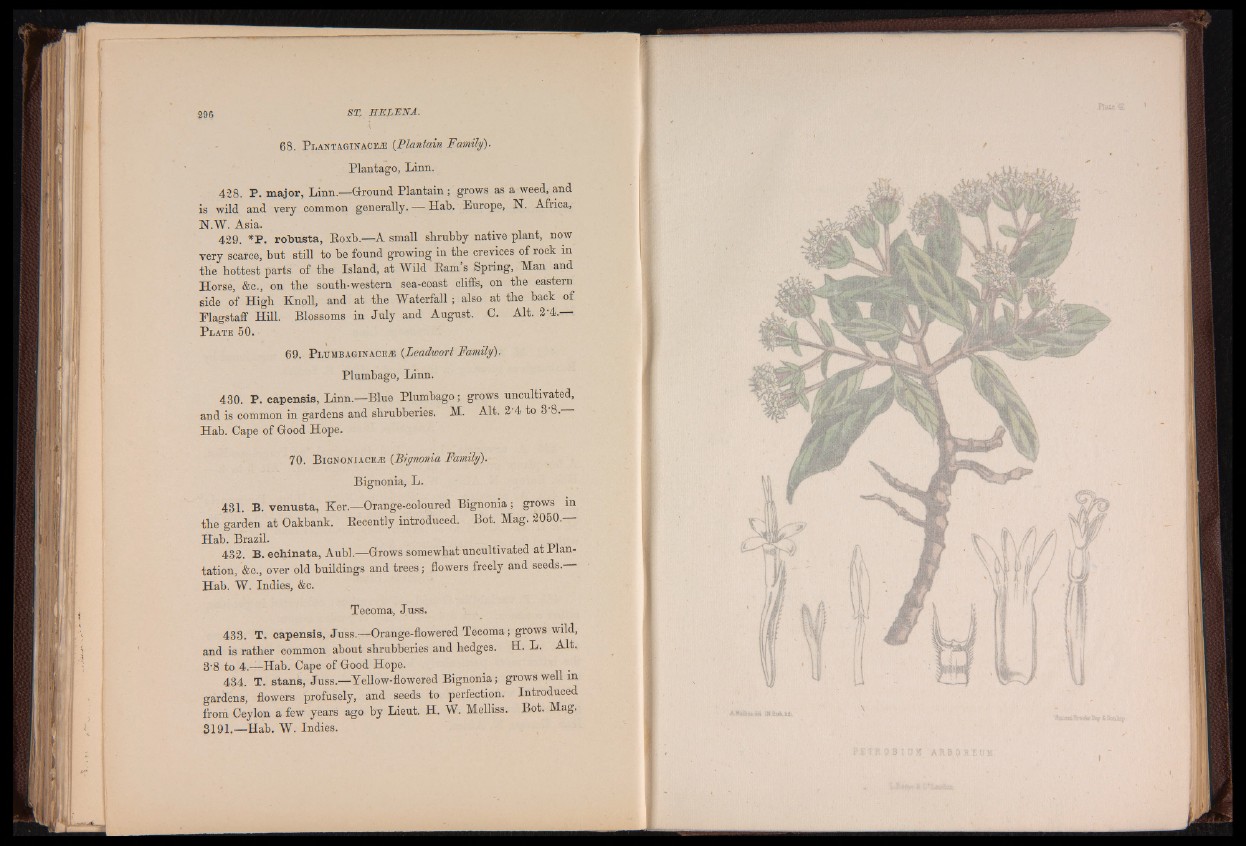
68. P l a n t a g i n a c k ^e (.Plantain Family).
Plantago, Linn.
428. P. major, Linn.—Ground Plantain; grows as a weed, and
is wild and very common generally. — Hab. Europe, N. Africa,
N.W. Asia.
429. *P. robusta, Eoxb.—A small shrubby native plant, now
very scarce, but still to be found growing in the crevices of rock in
the hottest parts of the Island, at Wild Eam’s Spring, Man and
Horse, &c., on the south-western sea-coast cliffs, on the eastern
side of High Knoll, and at the Waterfall; also at the back of
Flagstaff Hill. Blossoms in July and August. C. Alt. 2'4.
P l a t e 5 0 .
69. P l u m b a g i n A C E i E (Leadwort Family).
Plumbago, Linn.
430. P. capensis, Linn.—Blue Plumbago; grows uncultivated,
and is common in gardens and shrubberies. M. Alt. 2-4 to 3'8.
Hab. Cape of Good Hope.
70. B i G N O N i A C E n (Bignonia Family).
Bignonia, L.
431. B. venusta, Ker.—Orange-coloured Bignonia; grows in
the garden at Oakbank. Eecently introduced. Bot. Mag. 2050.
Hab. Brazil. .
432. B. echinata, Aubl.—Grows somewhat uncultivated at Plantation,
&c., over old buildings and trees; flowers freely and seeds.
Hah. W. Indies, &c.
Tecoma, Juss.
433. T. capensis, Juss.—Orange-flowered Tecoma; grows wild,
and is rather common about shrubberies and hedges. H. L. Alt.
3-8 to 4.-—Hab. Cape of Good Hope.
434. T. stans, Juss.—Yellow-flowered Bignonia; grows well m
gardens, flowers profusely, and seeds to perfection. Introduced
from Ceylon a few years ago by Lieut. H. W. Melliss. Bot. Mag.
3191.—Hab. W. Indies.